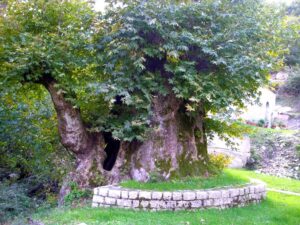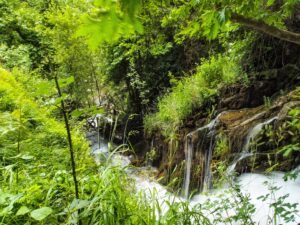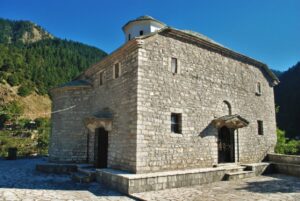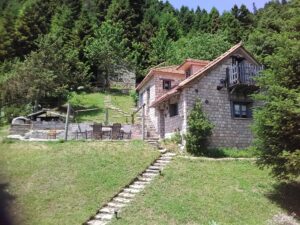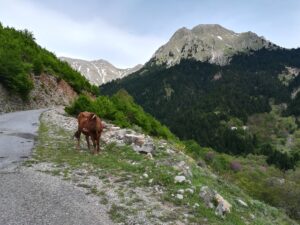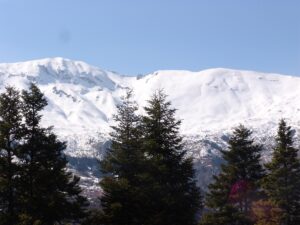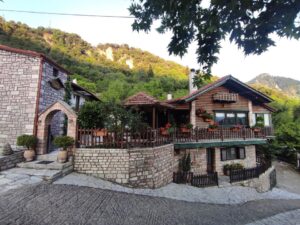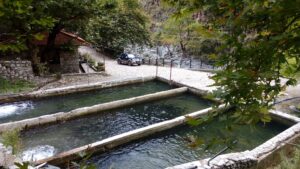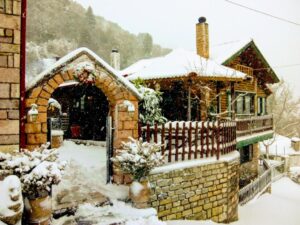It is the most difficult region of Greece, as the numerous towering mountain peaks and deep ravines make transportation difficult and exciting! In total, Agrafa has 7 peaks with an altitude of over 2,000 meters! Karava (2,184 m), Delidimi (2,163 m), Voutsikaki (2,154 m), Fteri (2,128 m), Liakoura (2,043 m), Marathia (2,042 m) and Kalivia (2,018 m.) but there are many peaks with an altitude above 1,900 meters.
The proud mountains of Agrafa are drowned in the fir forest. In the summer months, the "melo", the honeyed fir cone that makes the forests sparkle, is a real sight of nature. The Tavropos and Agrafiotis rivers flow from the forests, adorned with magnificent stone arched bridges.
History lost in ancient times
In recent archaeological research, stone tools were discovered in the area, which are the first evidence of human activity from the Middle Paleolithic Age. In ancient times, the Greek tribes of Agraion, Aperantion, Evrytanon, and Dolopon were settled in the region of Agrafa.
Agrafa flourished during the Turkish occupation. The Ottomans considered it unprofitable to establish a garrison for military control of the region, considering it preferable to grant the region autonomy status and collect a fixed taxation. So they proceeded in 1525 AD. at the signing of the Treaty of Tamasio, which granted autonomy to the region of Agrafi, in exchange for the obligation of the inhabitants to pay an annual tax of 50,000 grosci.
In the middle of the 17th century, Greeks from the region of Agrafa, a total of 32 families, due to the difficult living conditions in the mountainous areas, moved and settled in the region of Bursa in Asia Minor, where they created the settlement of Demirdesi (Demerdesi).
In the years that followed, the area developed economically, a fact that is reflected in the large churches and monasteries that were built during this period. The art of hagiography was particularly important, with the local hagiographers creating remarkable hagiography workshops.[10] Due to the climate of greater freedom and economic development that prevailed, Agrafa attracted people of the spirit such as Evgenios Giannoulis o Aitolos who founded the Hellenic Museum of Agrafa, a higher school of grammar and religious studies.
At the same time, the area gathered many fugitives who were facing problems with the Ottoman authorities who, together with local chieftains, formed bodies of "thieves" (kleftes). Certain commanders of these corps were entrusted by the Turks with the security of the region. These groups formed the bodies of the charioteers (armatoloi).
The most important kleftis of the Agrafa was Katsantonis who operated in the period 1802-1808. For his arrest, Ali Pasha of Ioannina organized many operations that failed for several years. The leader of the Greek revolution of 1821, Georgios Karaiskakis, also came from Agrafa. He assumed the charioteer of Agrafa until 1824 and was then appointed commander-in-chief of Roumeli until his death in 1827.

